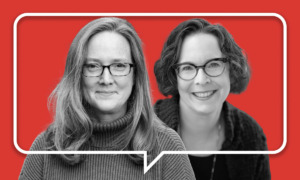_fmt.jpg) |
|
Geoffrey Canada |
The premise of the Harlem Children’s Zone is deceptively simple: Provide the same cradle-to-college support for low-income, at-risk children in Harlem that middle-class children usually receive.
It’s the implementation that is difficult and has required the one-in-a-billion combination of an extraordinary leader and the exceedingly deep pockets of one of the lions of Wall Street, his friends and their deep pockets, and their friends and their deep pockets. The annual budget is hovering around $60 million and probably would have been more if not for the effect the deep recession has had on the net worth, and in some instances the very existence (think Lehman Brothers), of the Wall Street giants that have helped to pay for Geoffrey Canada’s social welfare dream.
“They work wonders,” Keith Hefner, head of New York’s Youth Communications, said, “but it will be very hard to replicate it. And from my reading of Paul Tough’s account [Whatever It Takes], they seem to have a particularly tough time working with the worst kids and closed the first charter school because of it.”
The concept has a nearly 40-year background. Richard Murphy, CEO of Youthline America, began what is now Harlem Children’s Zone as the Rheedlen Foundation in 1970. At first, it was a one-man program, though it grew to include 10 centers – mostly across what is now the HCZ area. The centers offered anti-truancy and anti-violence programs.
Even after Murphy left in 1990 to be New York City’s commissioner of youth services and Canada – who was hired by Murphy in 1983 – became the new head of Rheedlen, Murphy continued to establish new programs that helped Harlem and other low-income areas, especially the city’s Beacon Schools network of after-school programs.
By 1997, Canada was talking about what was then called the Harlem Children’s Project, a 24-block zone in central Harlem – now grown to 97 square blocks – with a full 24-hours-a-day/seven-days-a-week support system for children and their families, including: Baby College to teach prospective parents how better to raise their children, mental and physical health clinics for the children and their parents, preschool programs, charter schools, after-school programs, peacemakers programs and community centers.
Though Canada was clearly the visionary, HCZ’s success can just as surely be attributed to Canada’s Bowdoin College friend/board chairman/benefactor: billionaire Stanley Druckenmiller, head of one of the country’s most successful hedge funds, Duquesne Capital. Not only has Druckenmiller poured more than $100 million into HCZ himself, he recruited for the HCZ board other titans of commerce, who have, along with their companies, poured in millions of dollars more. Druckenmiller also insisted that Canada draw up a 10-year business plan and has held him to producing results.
Success, with a “But” …
But, at best, HCZ serves half the children and adults in its designated 97-block area. And its approach to the children at the very bottom of the social structure has been very Wall Street-like, too.
When HCZ opened its middle school in 2004, opening enrollment to anyone in the neighborhood, school administrators found they had what would come to be called the “bad apples.” HCZ officials admitted they didn’t know how to deal with these children, and one board member cautioned that the failure to control them could damage the “Harlem Children’s Zone brand.” HCZ closed the middle school to new students. And when enrollment reopened a year later, students were chosen by lottery from those already enrolled in HCZ programs.






























